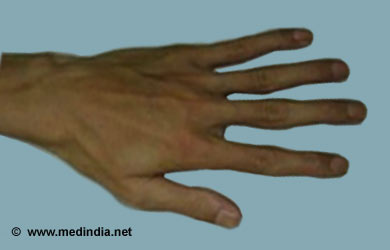- von Kodolitsch Y, Robinson P. Marfan Syndrome: An update of genetics, medical and surgical management. Heart 2007; 93:755-760.
- Frydman M. The Marfan syndrome. IMAJ 2008;10:175-178.
- Ha H, Seo FB, Lee SH, Foon-Won kang, Goo HW, Lim T, Shin MF. Imaging of Marfan syndrome: Mutisystemic manifestations.
About

Marfan syndrome is an inherited disease that affects the connective tissue, a tissue that imparts strength and flexibility to various structures of the body like the brain, eyes, heart, bones, skin, blood vessels and lungs, and holds the body together. The defective connective tissue in Marfan syndrome does not provide adequate framework for growth and development of these structures.
Marfan syndrome affects 1 in 5000 to 10000 individuals. It is named after Antoine-Bernard-Jean Marfan who diagnosed a similar condition way back in 1896. Both the sexes are equally affected by this disorder, which is sometimes diagnosed in athletes, specially the basketball and volleyball players. The reason for this could be that patients with Marfan syndrome are typically tall with long limbs, which is beneficial for such sports. However, once diagnosed, the patient should be advised to stop playing contact sports.
Marfan syndrome could lead to complications like spontaneous pneumothorax (air in the thorax resulting in lung collapse) and weakness of the dural membrane (the covering of the brain and spinal cord). Heart valves, especially the mitral valve, may be abnormal. The most dangerous manifestation is damage to the aorta or the main artery in the body.
An unfortunate case of death due to undiagnosed Marfan syndrome is that of Flo Hyman, the famous volleyball player. Flo went on to receive silver Olympic medal during her career, but collapsed in 1986 during a volleyball game due to damage to the aorta. This incident highlights the importance of screening athletes for Marfan syndrome.
Marfan syndrome occurs due to mutations in the fibrillin-1 gene (FBN1). The FBN1 gene encodes for fibrillin-1, which is a major component of microfibrils. Microfibrils are important for the elasticity of tissues. Thus, tissue elasticity is affected in patients of Marfan syndrome.
Severe Marfan syndrome in babies can result in death before one year of age. In most other people, symptoms appear after puberty, with complications developing only in adulthood. Where latest treatment modalities are available, the life expectancy has increased to over 60 years of age.








